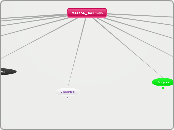Weeks 13-14
Order of
Operations
Dividing
Fractions
Improper
Fractions
Multiplying
Fractions
Improper
Fractions
Video
Adding and subtracting
Fractions
Weeks 10 -12
Fractions
Simplifying Fractions
Fraction
Equivalency
Notes
Definitions
Weeks 8 - 9
Scientific
Notation
Scientific
Notation
N
A way of expressing numbers that are too big or too small written in decimal form.
Standard
Form
When the number is written in standard numerical form.
4,900,000,000 is 4.9 x 109
5326.6 is 5.3266 x 103
Rational and
Irrational numbers
Rational
Irrational
Multiplying
Binomials
Video example
Distributive Property
With Integers
Distance of Squares
Formula
Multiplying and
Dividing Integers
Notes for Multiplying
Notes for Multiplication
*Use zero bank when the first coefficient is a negative
Example: -1(-3)
Notes for Multiplication and Division
* When signs are the same the answer will be a positive
* When signs are different the answer will be a negative.
Homework examples
Multiplying integers
using a number line
Weeks 4-7
Addition
Notes
When adding integers draw using + and - if the numbers are below 10 and use the diagram method if they are above 10.
Diagram method is adding 2 of the signs ( positive or negative) of the bigger number ( or pile) over that number and 1 sign over the smaller number, circle the sign over the smaller number with 1 of the other signs, if the same then you add the 2 numbers and if different you subtract. Then the leftover sign of the big number is what your answer will be.
Example: - ++ - and + means you subtract
-15+436 -> -15 + 436 -> 436 minus -15=421
the answer is 421 because there is still one + over the 436.
Homework
Examples of
drawing and
diagram
Subtraction
notes
Use drawings if below 10 or do KCC and then the same method as addition to solve.
GCF/ LCM
Homework Examples
Factor tree,
Venn Diagram,
and Double Bubble
notes
Divisibility Rules
Rules
Notes with examples
Division
Repeated Subtraction
Upwards Division
Write as a fraction and then start dividing the denominator into the numerator starting left to right that way if there is a remainder it is left in fraction form and easier to understand what that number means.
Example:
382= 3 goes into 3 1 time, 3 goes into 8 2 times with 2 left over, 3
3 goes into 22 7 times with 1 left over. Instead of saying
remainder 1 and not knowing what that means, just leave the 1 over the 3 and you'll always remember that it stands for 1/3.
127 1/3
Prime Number
A number that is divisible by 1 and itself, only 2 factors
Example: 3 can only be divided by 1 and 3.
Composite Number
A number that can be divided evenly by numbers other than 1 and itself. Example: 4 has divisors of 1, 2 and 4
GCF
Greatest Common Factor: The greatest common divisor of 2 or more integers. Example: the GCF of 8 and 12 is 4.
Usually a smaller number than LCM
LCM
Least Common Multiple: The smallest positive integer that is divisible by both 2 or more numbers. Example: the LCM of 7 and 9 is 63. Usually Bigger than GCF.
Factor Tree
Zero Bank
+++++
_ _ _ _ _ They cancel each other out and make zero
Integers
A whole number that can be positive or negative.
Example: 2, 1000, -800 all integers, 1 1/2 10.9 are not
KCC
Keep Change Change- Used when subtracting integers. keep the sign of the first number, change the subtraction sign to addition and change the sign of the second number.
Example -39- ( -156) turns into -39+ (156)
Elementary Mathematics
Weeks 1-3
Area Model
for Multiplication
Alternate
algorithms
How to add using estimation.
Front end
estimation
Compatible numbers
for estimation
Scratch Method
& Compatible
Numbers
More algorithms for learning addition.
Subtraction
Using alternate algorithms for subtracting.
Partial
Difference
Equal
Add-Ons
Addition
Using alternate algorithms for addition.
Partial sums
Left to Right
Expanded
Lattice
Other Bases
Convert other
bases to base ten
How to convert other bases to base ten.
Convert to
other bases
How to convert to other bases from base ten.
Examples
Notes
Finding out what base ten is and how to group it.
Homework
Examples
Vocabulary
UnDevCarLo
Understand the problem
Develop a plan
Carry out the plan
Look back, does the answer work
Base 10
Estimation
area
Guess and Check
Problem solving strategy where you guess the answer and then check to see if the guess is right.









